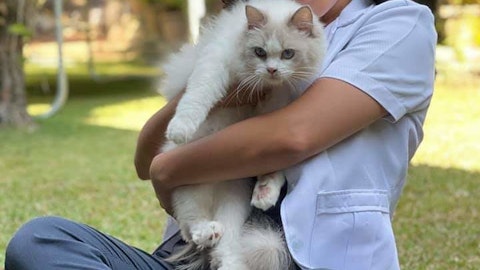Wei Li: Yes, good question. As a reminder, we acquired pet expert and smart the second half of last year. So since then, when we report our quarterly results in the key metrics. The total pet count and the subscription business pet count, they do include those test load in Europe. But as a reminder, they are currently under a commission-based insurance agent business model, we did not underwrite those policies underwritten by a third party policies. So their revenue are commissioned. So that’s why, if you look at the report we provide every quarter since then the per pet metrics, especially. Those do not do not include the European pets underwritten by third parties. So that’s the reason when we do the reconciliation to calculate the pet acquisition cost for every average single pack, the $236 per pet this quarter that has to be excluded, because it doesn’t make sense. The revenue profile totally different our underwriting model. I hope that’s helpful.
Wilma Burdis: Thank you.
Operator: The next question comes from Katie Sakys from Autonomous Research. Please go ahead.
Katie Sakys: Hi, thank you. It looks like quite a bit more cash moved into the insurance subsidiaries this quarter. And two months ago at the shareholder meeting, it sounded like you guys felt that the subs were more than adequately capitalized. So I’m kind of curious why the move – why the increase well above minimum RBC requirements.
Wei Li: Hi Katie, This is Wei, again or yeah. I’m happy to answer this question let Darryl, Margi chime in. So basically, we wanted to provide more – a little bit more clarity about our cash position. I wanted to reiterate what I mentioned before is that we’re very happy about our cash position. I’m increasingly confident about the trajectory. The free cash flow has been improving $4 million-ish better than Q1 and we expect to be continuing to improve sequentially in the second half of the year and I’m confident about our free cash flow being positive in Q4. And we do provide a little bit more color on the cash position between the insurance company and the holding company just for being more transparent and as you can see we have $25 million in cash at the outside of the insurance entity and we also have $40 million credit facility and plus we have $57 million more than the required capital requirement at the insurance company.
So that gives us over $120 million that we believe is we’re appropriately capitalized in the near future.
Margi Tooth: Yes. And if I can add a little bit there as well. Hi, Katie, it’s Margi. In terms of why there is additional, you’re right, we are ever capitalized and we are actively working on adjusting that to ensure that that – the good news is that we don’t need to continue to put money in when we’ve already our capitalization at the level that we have. So historically, we would have to continue to support that. Hopefully you can hear me, there are some blue angels flying over our heads right now. So I apologize for the background noise. But the hope is over the next few months, we will work through our plans in terms of what that capital allocation that explain, so we can ensure that we’re as efficient as possible. We’re just happy that at this stage we are obviously well above that RBC level, which means that we’re not continuing to have to put money in at the levels we were when we had that combined growth of both for Trupanion our other business segment growing at much higher levels than before.
Katie Sakys: Okay. And then as a quick follow-up question. How much of your marketing expense in 2Q, would you characterize as cuttable, I know you guys talked about doing some experimental things on the marketing side? How much of that could potentially be cut if need be in the back half of the year to get margins where you’d like them to be?
Margi Tooth: Yes. So when we’re thinking about marketing, so if we’re talking about the core business specifically here. There have been some reductions already in Q2 that really will take us to the point where they came our core channels. We can continue to go further into our PAC, we’re always looking at the internal rates of return. And the key thing here is as we leave it in the opening remarks, we really trying to get granular and decentralized in the way we’re reporting our internal rates of return to allow us to understand what do we need to be spending for a specific area or geography or product versus what have we just historically got on the books. So for example, when we talk about cutting expense that would imply that we’re not going to be – and there are things that we’re doing not going to drive return at any point in time.
So we’ve already reduced – we go to things like contract spend, we’ve made sure that the teams are clear on the value being driven and driven from the activities are producing. We could take that PAC down probably somewhere between 25% to 30% further than we have done. It’s important day for us. If we’ve got margins where they need to be. So we’re not looking at that blanket approach. Looking at a granular level approach. We can see there are lots of areas within our addressable market across North America that we can very healthily grow and that’s a lot of the growth that you’ve seen in the quarter has come from areas where we have strong margin, we are hitting our value proposition. And we have confidence in the internal rates of return to continue to grow that.



